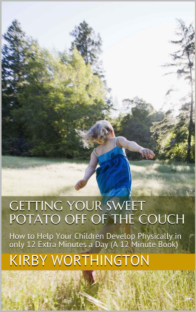How to Help your Preschooler Deal with Irrational Fears
 Three-year-old Jonathan would not go anywhere without wearing a hat. He called it his "helmet." One day, Kirby and Jonathan were out walking in the woods, and Jonathan realized that he had forgotten his helmet. He started to get panicky. Kirby quickly offered him the knit hat she was wearing because of the cold, and he calmed down.
Three-year-old Jonathan would not go anywhere without wearing a hat. He called it his "helmet." One day, Kirby and Jonathan were out walking in the woods, and Jonathan realized that he had forgotten his helmet. He started to get panicky. Kirby quickly offered him the knit hat she was wearing because of the cold, and he calmed down.
After a while, Kirby asked him, "How do you like wearing my helmet?"
Jonathan replied, "I like it. It keeps me from falling down."
"How does it do that?" asked Kirby.
"Just fine," answered Jonathan.
Later, Kirby was able to figure out that Jonathan had observed his dad wearing a bike helmet, and had asked him why he wore it. His dad told him that it kept him safe. Jonathan interpreted that to mean that the helmet kept his dad from falling down while biking.
Don't you wish we could crawl into our preschooler's brains and watch the fascinating process of interpreting a world that is still so new to them?
Most of us, adults or otherwise, have some type of irrational fear. When my (Christen) daughter Bethany was in elementary school, she was afraid to go to the kitchen by herself (it was detached from the house.) One day, I was feeling frustrated with needing to accompany her every time she needed a snack, and I said unsympathetically, "You have to get over this fear." She responded, "How are you doing with talking on the phone?" "Touché," I thought. I continually come back to this conversation to remind myself to have empathy when my kid are scared.
Our children's fears can be scary and frustrating for us because we feel so out of control. We just can't talk them out of the fear that seems so obviously baseless to us. Fears get in the way of what needs to be done, and we feel powerless to help our kids get past them. Touching compassion by remembering our own struggles with fear can help us calm down if we feel angry or powerless.
Preschoolers are especially predisposed to irrational fears. First, as mentioned above, they are putting two and two together before they have learned to do math…and they often come up with five or seven or three as a result. While they likely won't be able to explain to you what they are thinking, you can listen carefully to the words they use when they talk about their fear, and then do some detective work. For example, the fact that Jonathan called his hats "helmets" gave Kirby a clue that led to the origin of the fear. When you understand the logic in their minds, you may be able to explain things in a way that takes away the fear.
Secondly, it's important to understand a few things about preschool brain development. Preschoolers believe in magic. So it seems perfectly reasonable that a helmet could keep them from falling down.
They think inanimate objects are alive and have feelings and intentions. They may believe that the table leg that keeps tripping them is doing it on purpose.
Preschoolers are developing in their understanding of size and shape and properties of objects. They may see through the slats of a bridge and be afraid that they will fall through even though there is no way they would fit.
They have not yet learned to distinguish between fantasy and reality, so the monster in the book they just read seems just as real as Abraham Lincoln.
Young children are also naturally egocentric. They may think that they caused things to happen which in reality have nothing to do with them. That kind of "power" can be pretty scary and can lead to some superstitious behaviors in an attempt to keep bad things from happening.
Understanding how preschoolers' brains work doesn't mean that you can change their thinking. You can't change a developmental reality with logic. You can and should present correct information to your child about the situation, but just don't expect that information to take away the fear.
So, if logic won't work on irrational fears, what can we do?
The most important thing to do is to help your child feel safe. Work with their logic and respect their feelings. Go ahead and carry them across the scary bridge, or let them wear the hat that protects them. Help them turn a scary imagination into a funny or powerful one—where they see themselves defeating the monsters, or they imagine a monster suddenly starting to dance to a Frozen song.
Sometimes, when a child is afraid, distracting him with something interesting can help him move past the fear. You could also try doing something unexpected or funny that surprises them out of the fearful state. (I admit, my husband is much better at this than I am.)
When a child is very scared, they probably need help calming down. Many children need to be held or to feel some kind of physical contact to calm down. It helps to quietly say, "I'm here. You're safe. Can you breathe with me?" Take some deep breaths together.
Engaging the senses is a great way to help someone get out of a fearful place in their minds. Help them feel a texture with their hands, notice smells in the air, or even just feel their feet on the ground. They can put a hand on their chest and feel themselves breathing or try to feel their heartbeat.
You can also engage the senses in an imaginary way, by telling a story that has them, for example, hear waves lapping on the beach and smell the salty, fishy smell and feel what the sun and breeze feel like on their skin. Tell a little story that takes place in a place that feels happy and peaceful to them.
Because fears come up regularly for small children, it's a good idea to practice self-calming skills at a time when they are feeling happy. Practice what it feels like to take deep breaths from the belly, or to relax their muscles. Talk about places that evoke good memories for them, so that you can use those images later in a story, and so that they are reinforcing soothing memories for themselves. Talk about and practice what they can do when they feel scared, and remind them that you are there for them when they are afraid.
When you calm and comfort a child when he is scared, you are helping him internalize the ability to calm himself. When you show your kids that you can be calm and okay when they are scared, they learn that they too can weather fears. And when you work with a scared child, you are instilling a deep sense of love that they will be able to carry with them as they face both big and small fears throughout their lives.
Photo Credit: Vinoth Chandar cc
Related Posts
By accepting you will be accessing a service provided by a third-party external to https://growthandgiggles.com/

